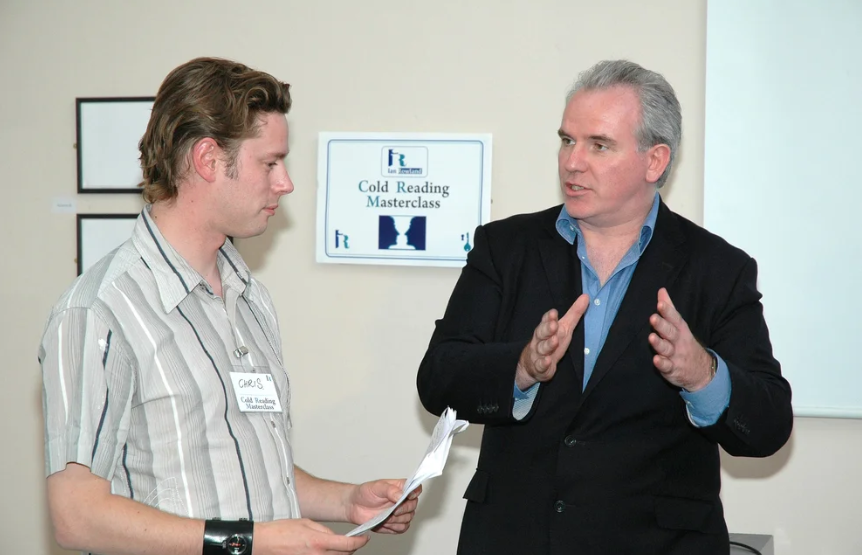Cold Reading Techniques: How to Create the Illusion of Insight
Cold Reading Techniques: How to Create the Illusion of Insight
From fortune tellers and stage performers to sales professionals and coaches, many people have mastered the art of making statements that feel personal without prior knowledge. The secret lies in cold reading techniques—a fascinating blend of psychology, language, and observation.
In this article, we’ll explore the most common cold reading techniques, why they work so well, and how to recognise them in everyday life.
What Are Cold Reading Techniques?
At their core, cold reading techniques are methods of communication designed to make vague or general statements sound highly specific. They rely on three pillars:
Observation – Picking up on small cues like clothing, body language, or tone of voice.
Language Patterns – Framing broad ideas in a way that feels unique.
Psychological Biases – Exploiting the human tendency to interpret vague statements as personal truths.
When combined, these cold reading techniques create the powerful illusion of mind reading.
Why Cold Reading Techniques Work
The success of cold reading techniques depends on human psychology. People are naturally inclined to:
Accept flattering but general statements (the Barnum effect).
Remember the “hits” and forget the “misses” (confirmation bias).
Help the reader succeed by filling in gaps themselves.
Respond positively to suggestions that reflect well on them.
This explains why even the simplest cold reading techniques can feel surprisingly accurate.
Classic Cold Reading Techniques
Here are some of the most common cold reading techniques used by psychics, performers, and mentalists:
1. Barnum Statements
“You sometimes doubt yourself, but deep down, you know you’re capable of more.” These universal truths are a cornerstone of cold reading techniques.
2. The Rainbow Ruse
“You’re sociable and outgoing, but sometimes you enjoy being alone.” This contradiction is one of the most effective cold reading techniques.
3. Jacques Statements
“When you were younger, you had ambitions that shifted as you grew older.” Age-related insights are timeless cold reading techniques.
4. Fishing
“I sense someone close to you has a name starting with J.” Fishing is one of the most flexible cold reading techniques, because it prompts the subject to supply details.
5. Observational Reads
Wedding rings, accents, or tattoos provide real clues. These observation-based cold reading techniques often feel like uncanny insights.
Advanced Cold Reading Techniques
Beyond the basics, professionals use more advanced cold reading techniques to maintain credibility:
Shotgunning – Making multiple rapid guesses to increase the chance of a hit.
Dual Statements – Offering two possible traits so at least one feels correct.
Push Statements – Presenting bold claims, then adapting based on the subject’s reaction.
These advanced cold reading techniques are especially common in stage shows and psychic readings.
Everyday Uses of Cold Reading Techniques
While often associated with fortune tellers, cold reading techniques appear in everyday life:
Sales – “I can tell you want the best quality, but also good value.”
Leadership – “You’re ambitious, but you also value stability.”
Coaching – Encouraging reflection with broad but supportive statements.
Social Interactions – Breaking the ice by making relatable observations.
Used ethically, cold reading techniques can strengthen communication and build rapport.
How to Spot Cold Reading Techniques
To avoid being misled, learn how to identify cold reading techniques when they’re used on you. Watch for:
Flattering but vague statements.
Contradictions that cover both options.
Guesses disguised as confident insights.
References to universal experiences like love, family, or career.
Once you recognise these patterns, the mystery of cold reading techniques quickly fades.
Cold reading is not magic—it’s psychology, observation, and communication. By understanding cold reading techniques, you can appreciate how performers and psychics create the illusion of knowing personal details.
From simple Barnum statements to advanced push methods, cold reading techniques reveal the fascinating ways humans respond to suggestion. Whether you want to use them ethically or simply recognise them in action, learning about cold reading techniques is both practical and eye-opening.





